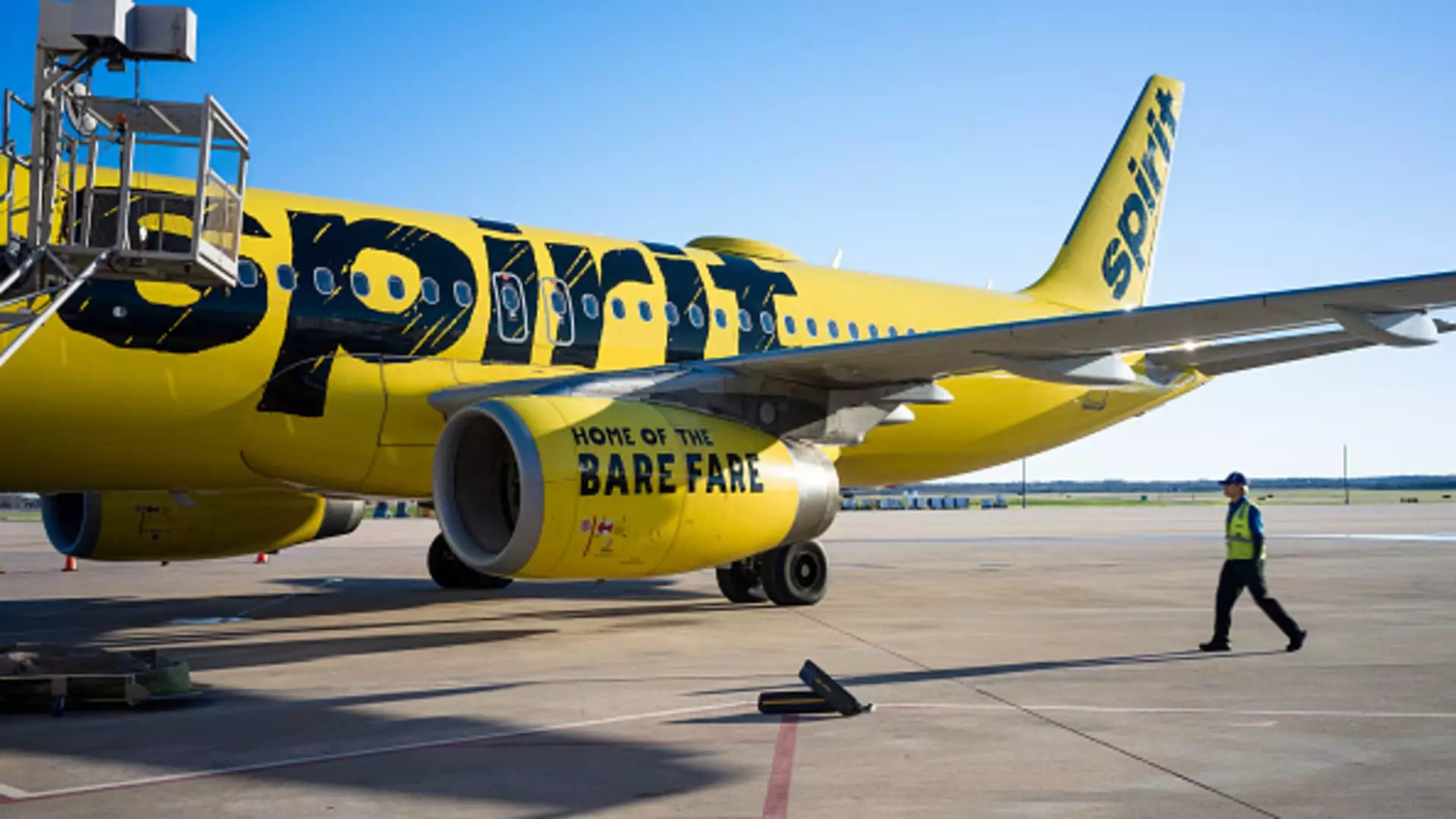On Friday, Spirit Airlines announced an intriguing yet precarious development regarding its financial situation: a new agreement with its credit card processor to extend its debt refinancing timeline until December. This announcement came mere hours before the previous deadline was set to expire, underlining the airline’s continued financial struggle. Earlier this week, Spirit had tapped into its full $300 million revolving credit facility, a significant move signaling their urgent need for cash flow stability. The company projects that it will finish the year with just over $1 billion in liquidity, a crucial buffer as it navigates a stormy economic landscape.
The airline sector has been notably volatile, particularly for Spirit, which has been grappling with steep financial challenges and a declining market position. Spirit’s latest filing confirms active negotiations with holders of senior secured notes, due in 2025, and convertible senior notes, due in 2026. Such negotiations are vital for the airline’s sustainability efforts, reflecting its search for solutions to manage its upcoming debt maturities. Originally, the refinancing deadline had been scheduled for September, extending to October 21, before shifting once again this week.
This ongoing instability is alarming; Spirit Airlines’ stock closed at an alarming low point, dropping approximately 3% to below $1.50 per share. The stock’s dismal performance paints a stark picture of investor sentiment and market confidence.
In response to its financial distress, Spirit has implemented several drastic operational changes. The airline has furloughed a portion of its workforce, reduced its flight schedule, and postponed aircraft deliveries—all urgent measures aimed at conserving cash reserves. Compounding these difficulties, many of Spirit’s aircraft remain grounded due to a significant engine recall from Pratt & Whitney, further diminishing operational capacity.
Moreover, the airline has reported disappointing booking numbers, exacerbating an already precarious situation. The blow to confidence is highlighted by the failed acquisition attempt by JetBlue Airways, which was derailed by a federal judge on antitrust grounds. This forced cancellation not only highlighted deeper industry challenges but also affected Spirit’s strategic direction and growth potential.
Market reactions to Spirit Airlines’ announcements have been overwhelmingly negative, with shares plummeting over 90% this year, with an alarming decline of nearly 40% just this October. These statistics raise unsettling questions about the airline’s future viability. Industry observers speculate that Spirit may soon find itself needing to file for bankruptcy in a bid to restructure its obligations and regain some financial footing.
As Spirit Airlines trudges through these turbulent times, its ability to navigate debt negotiations and restore investor confidence will be critical. With looming financial deadlines and operational dilemmas, the coming months will undoubtedly be defining for the struggling airline, leaving many to wonder if recovery is within reach or if further challenges lie ahead.

